Regarding diving, the Sea-Dweller is much more professional than the Submariner. While everyone knows the Submariner well, the Sea-Dweller is worth digging deeper and sharing.
Rolex is most famous for its Oyster case design, which has laid the foundation for its solid and practical image for nearly a hundred years. The waterproof depth can be said to be the most direct parameter to test the quality of a watch: watch material design, case complete sealing, luminous display for reading time, glass explosion-proof, and movement pressure resistance—these factors will directly affect the waterproof depth.
The editor has made a simple development history of Rolex’s waterproof depth, and you can see the contribution of the Sea-Dweller series in deep water:
In 1926, Rolex released the first Oyster watch, which had a rotating crown and rotating back cover and good waterproof performance to 50 meters. The development of Oyster sealing has continued.
1953, the first Submariner Ref 6200 (waterproof 100 meters) was released.
In 1958, the 200-meter waterproof Ref 6510 model was released, establishing the title of Submariner.
In 1960, the specially made third-generation DEEP SEA SPECIAL super giant experimental model (actually, it can’t be called a watch; it should be said to be a small bomb, which has no meaning to wear) was tied to the outside of the submarine and dived into the Mariana Trench 10,916 meters. When it returned to the surface, it was still running normally. Swiss replica watches.
In 1964, the US Navy Sea-Lab project was carried out in cooperation with the US military. This project laid the foundation for the birth of the Sea-Dweller that is genuinely suitable for wearing:
The project established an underwater laboratory under the water, targeting saturation diving (depth exceeding 120 meters, time exceeding one hour). For a long time, it studied the physical and psychological conditions of the human body in this deep-sea house, which has critical practical references for more scientific deep diving and rescue.
The study found that the body releases nitrogen from the tissues to form insoluble bubbles when escaping from the deep sea or deep-sea diving. This bubble forms an embolism in small blood vessels, blocking blood flow and causing muscle and joint pain. If the central nervous system is embolic, it may even cause paralysis or death in severe cases. This is the common decompression sickness in diving.
Therefore, the human body needs to discharge nitrogen before returning to the water; otherwise, it will suffer from diving decompression sickness. Deep diving will discharge nitrogen by inhaling 95% mixed helium. Because helium molecules are tiny, they are easier to discharge from the body during buoyancy. At the same time, it will also enter the watch in a high-pressure form; during the decompression process of buoyancy, the watch is too sealed. If the helium cannot be discharged quickly, the helium will expand and burst the glass, which is why the watch mirror bursts. Fake watches.
Rolex solved this problem by cooperating with the US military in experiments and using a reverse pressure-resistant device design based on the same principle as submarines. Under certain pressure, the helium discharge device will automatically open for decompression, so the diving watch will no longer burst due to helium.
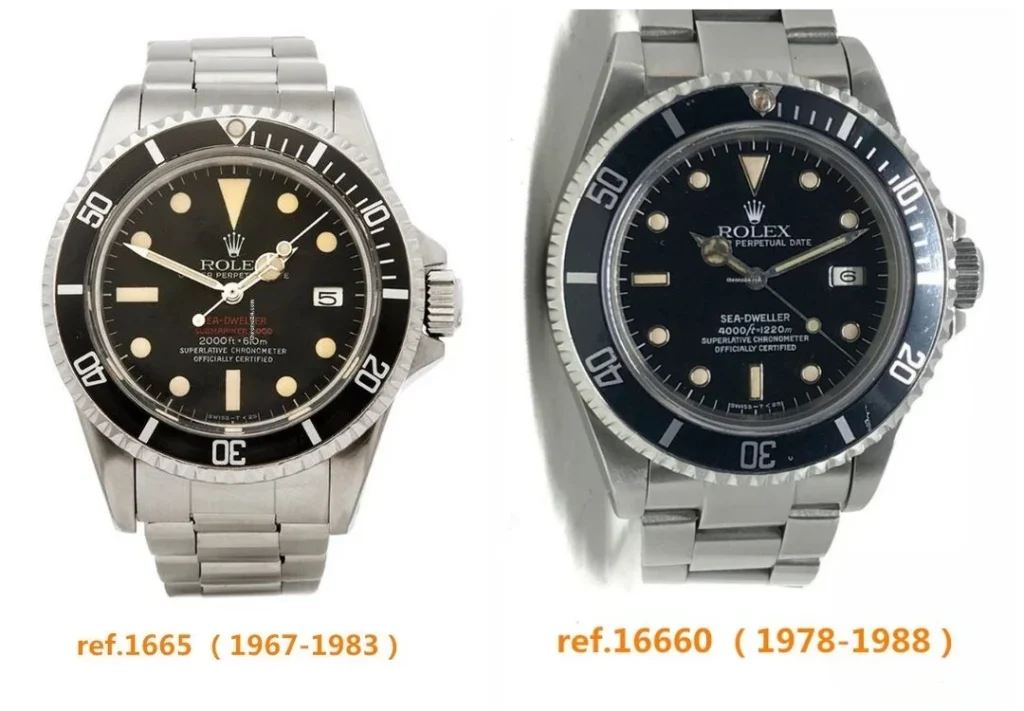
In 1967, the first Sea-DWELLER was born. The Ref1665, designed for professional deep-water divers, was the world’s first diving watch with a helium release valve and a 500M waterproof rating. The watch has a diameter of 40MM and an acrylic lens.
In 1971, Rolex collaborated with the famous marine engineering company COMEX to release the first Ref 5513COMEX co-branded model. They continued to collaborate until 2004. Decades of cooperation have also made diving watch technology more mature. Rolex’s diving watch technology can be summarized in one sentence: “It has always been imitated but never surpassed.”
The second generation of Ref 16660 Sea-Dweller was released in 1978, but it was not officially launched until 1981. The reason was that the patent of Blancpain’s Fifty Fathoms unidirectional diving bezel expired. The 16660, known as the Devil’s Thirty-Six, can be said to have many devilish configurations: sapphire glass, unidirectional diving bezel, the first solid watch strap, the first second-generation helium exhaust device, the first diving depth of 1220 meters, and equipped with a 3035 movement.
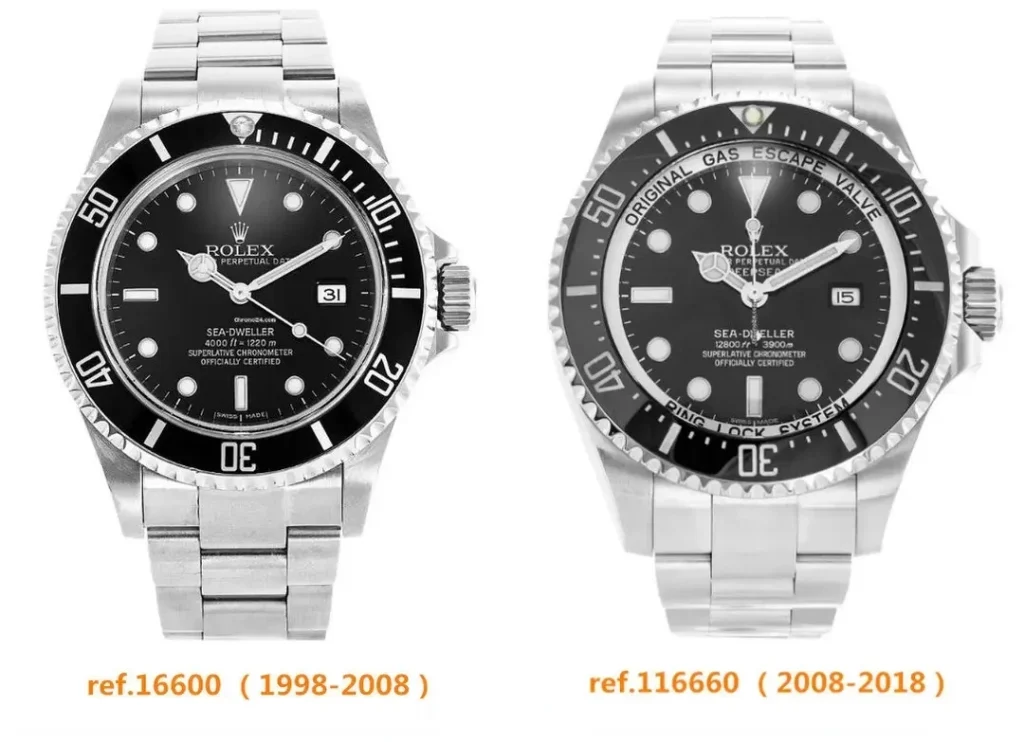
In 1988, due to the need to upgrade the 3135 movement, Ref 16660 was also transformed into the third generation of Ref 16600 Sea-Dweller, which fully adopted platinum scales and 904L steel; it was discontinued after the release of the Ghost King in 2008, so 16660 and 16600 are also commonly known as the “Little Ghost King.”
The most muscular Deepsea watch on the calendar 2008 was released, Ref 116660 Sea-Dweller DEEPSEA, representing the most profound civilian diving depth of 3900 meters (the actual test depth can reach 4875 meters). The configuration is also available in various enhanced versions: diameter 44MM, thickness 17MM, glass thickness 5.5MM, weight 220G, equipped with a ceramic Perkin scale outer ring and a 20MM adjustable extension buckle design.
In 2012, Rolex customized a super giant Deepsea watch to dive into the Mariana Trench with James Cameron. One was placed outside the submarine to test the actual underwater diving world record of 12,000 meters, and Cameron wore the other to confirm the helium exhaust test of this super Deepsea watch.
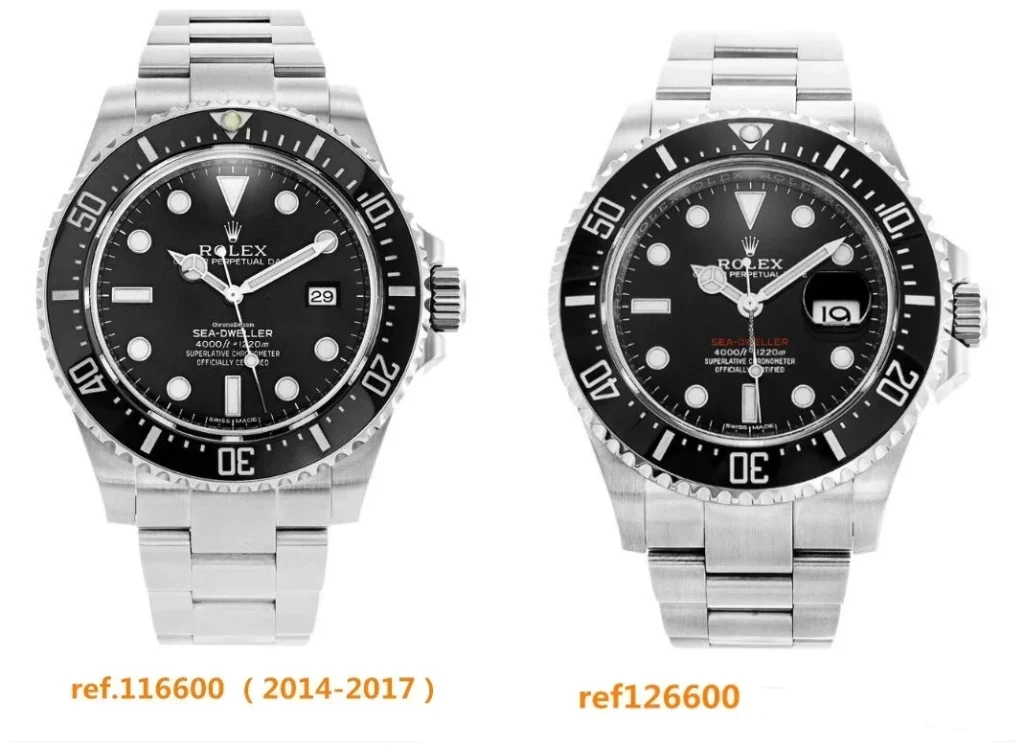
In 2014, the fourth generation of Ref 116600 Sea-Dweller was released, and the configuration was also updated accordingly; this short-lived Sea-Dweller was replaced by the new movement 126600 just three years later.
In 2017, the fifth generation Sea-Dweller Ref 126600, equipped with the new 3235 movement, was released. The watch’s diameter was changed to 43MM.
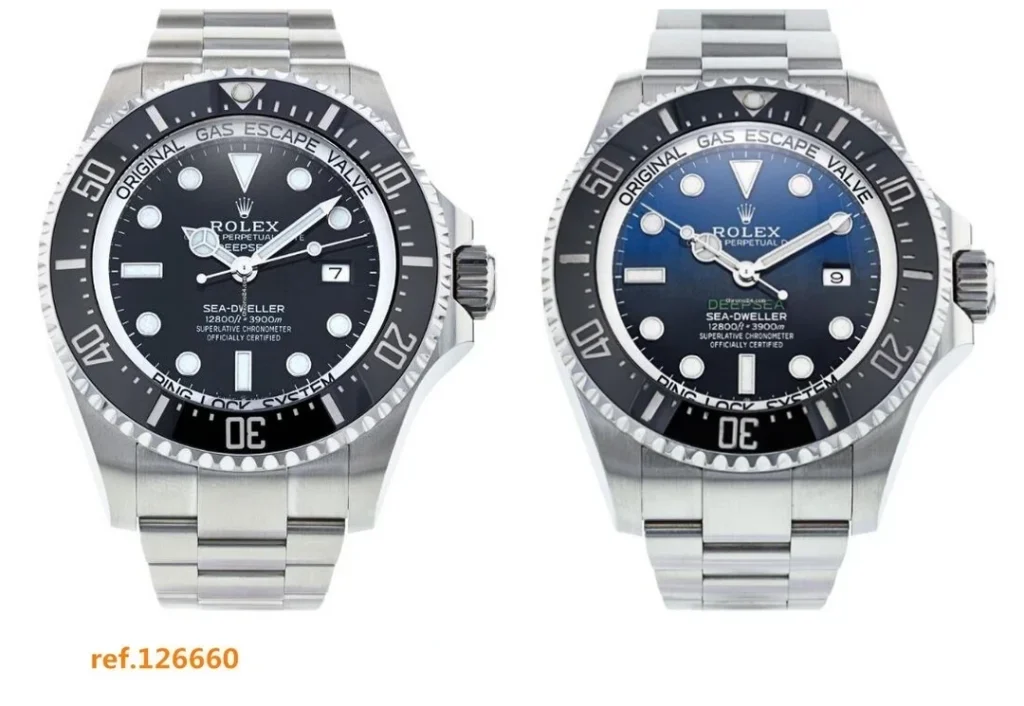
In 2018, the Ghost King also upgraded the movement and released Ref126660. Except for the movement configuration, there was not much change.
For a detailed introduction to the history of the Sea-Dweller, you can search for “CLASS IS FOREVER—The Complete History and Models of Sea-Dweller” in the Wu version of Watch Lovers.
In the past 51 years, the development of the Rolex Sea-Dweller series has only released seven models; however, each has epoch-making significance. It is less pleasing and easy to sell than the Submariner because he is the big boss in the diving industry, the diving king who disdains to please small wrists and is only loyal to the strongest.
Today, I bring you the most satisfactory review of the old Sea-Dweller 16660:
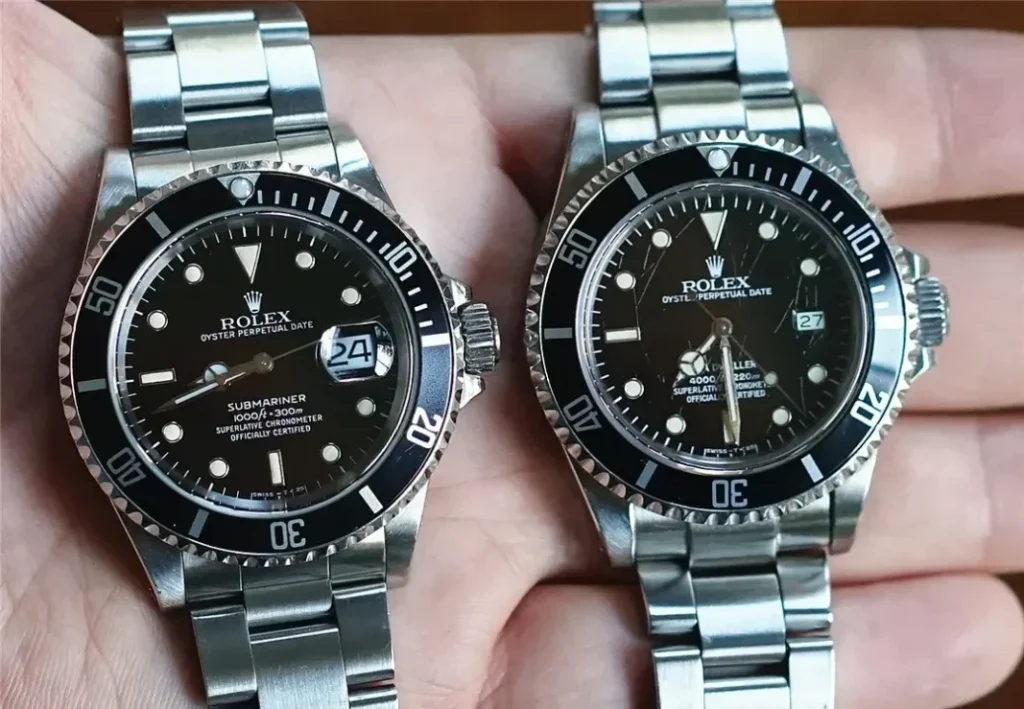
First, let’s compare. From left to right, they are 16610 and 16660, respectively; from a distance, they all look like Submarines. If you pay close attention, you will find that the old Sea-Dweller has no bubble design.
If you compare it carefully, you will find that the size of the dial is also different. On the contrary, the Sea-Dweller, with a waterproof depth of 1220, looks smaller. The actual diameter of the outer ring of the old Sea-Dweller is 39MM, while the Submariner is 40MM. Although the dial design is only one millimeter different, the proportion is more pleasing to the eye and harmonious.
MK1-MK2 uses plaster scales. From 1984, the original nail dial MK3 was used, and then the late MK5 dial in my hand.
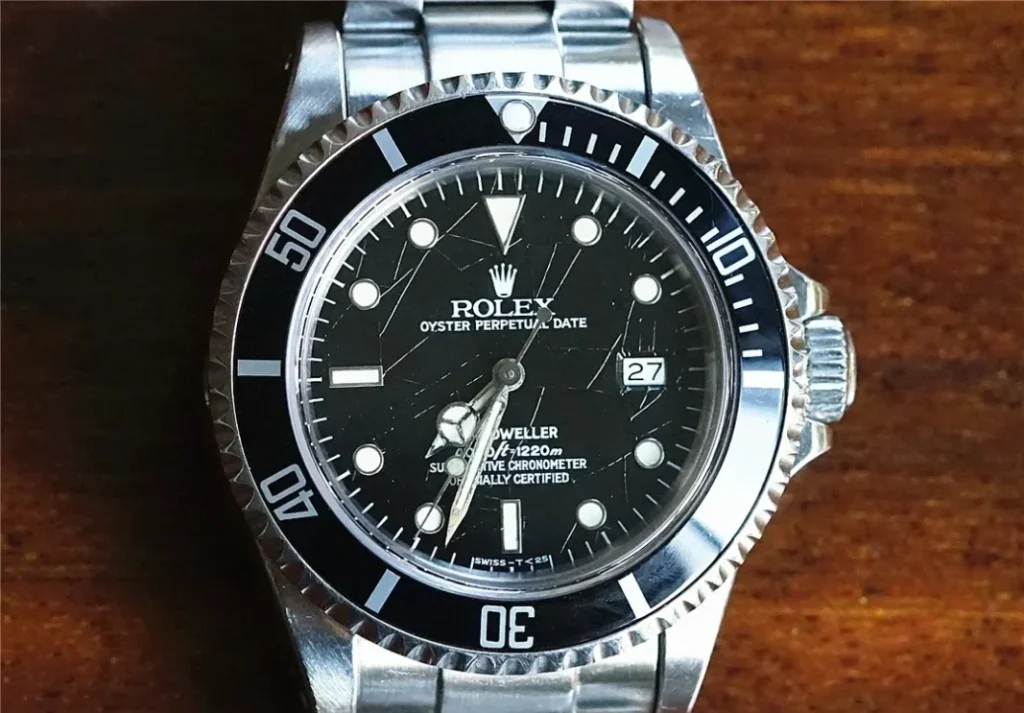
The dial is extraordinary. The protective paint responsible for it (the varnish on the surface) has significant quality problems. Due to aging, cracks will appear after a long time, and this unique dial is called “Spider Web Dial” by Rolex fans.
Spider dials such as 5513, 168000, and 16660 mostly appeared in the late 1980s. This unique dial with cracks appeared because of a problem with the manufacturer’s formula manufacturer’s for producing the varnish. Players seek this exceptional and rare dial. Although Rolex can replace a new dial for free, the rarity value of the spider dial is far greater than that of an ordinary nail dial.
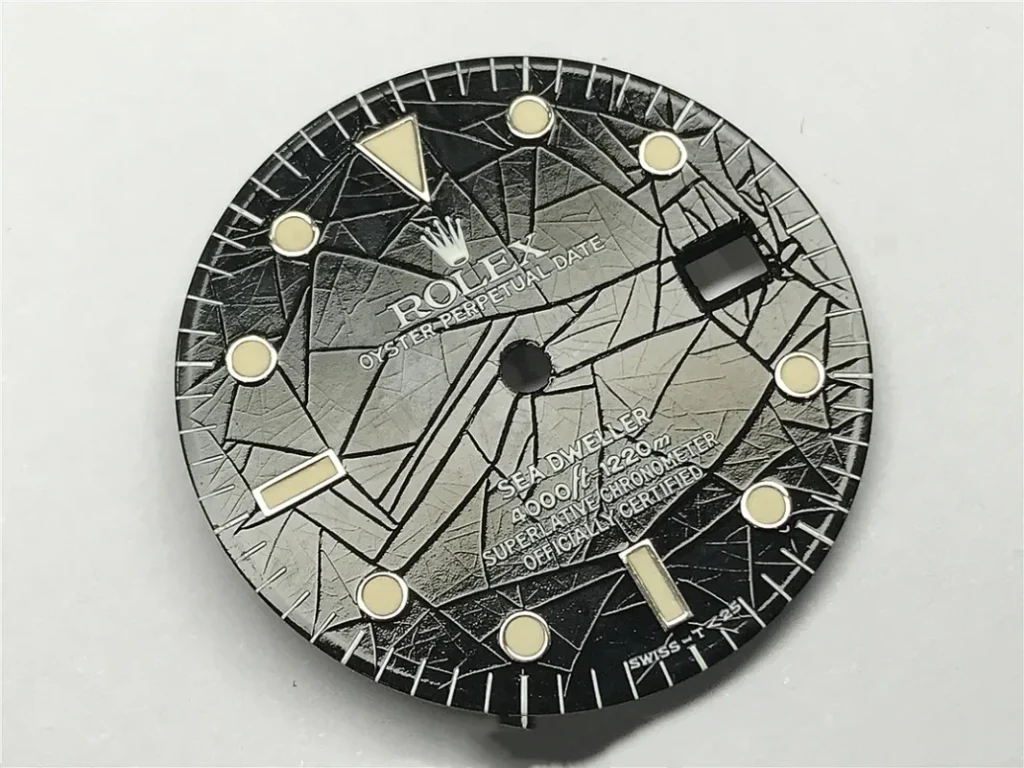
Because cracks are unpredictable and natural, the patterns on each spider are different. Some cracks are as fine as hair, some are neatly arranged ice cracks, and this exaggerated extensive crack network is the most serious. There are various ways of cracking, and looking closely at this “shabby” antique flavor is also fun.
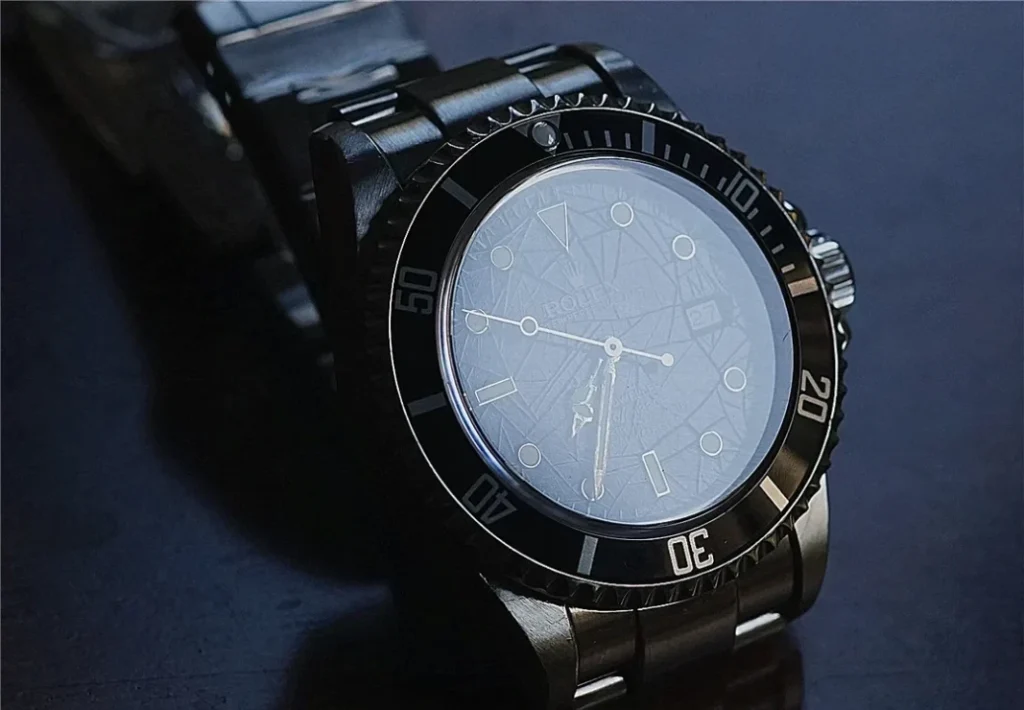
The sea-dweller has always been a traditional configuration without a bubble magnifier (I wonder why a new sea-dweller with a single red band and a bubble is released). As a professional diving watch, the calendar plus the bubble will add unnecessary trouble. The magnifier has a chance to fall off under high pressure underwater. In addition, the raised bubble in deep-water operations is more likely to be bumped and burst. Therefore, in deep-diving watches, the importance of glass is very high, and pressure resistance and explosion-proof are the priority.
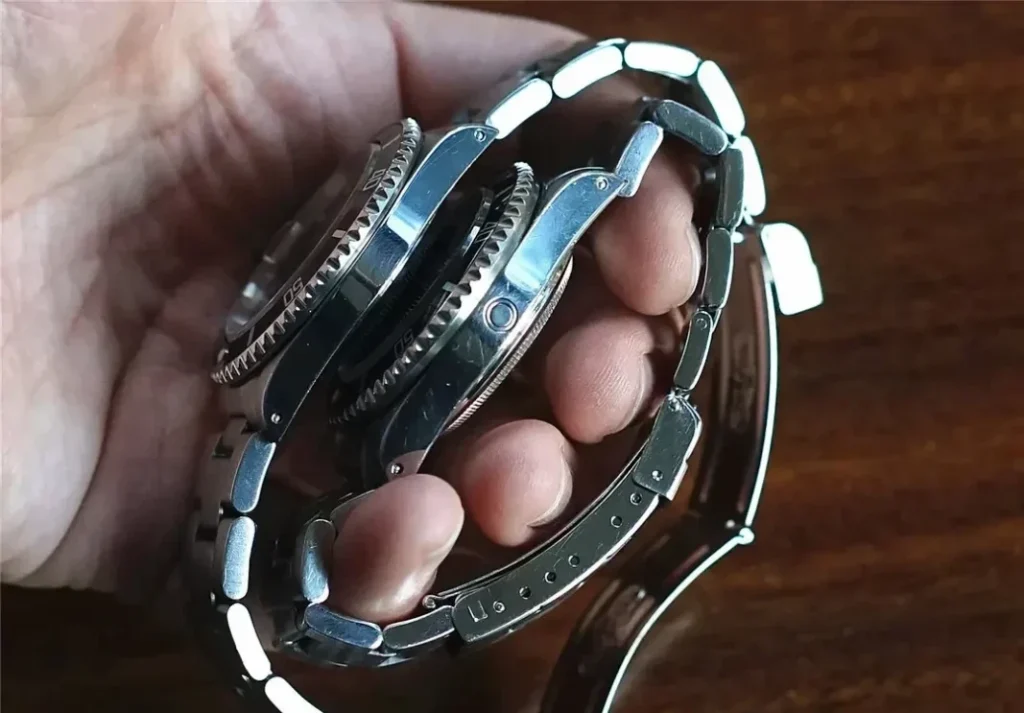
Another significant change in 16660 is the change of the helium exhaust valve. This seemingly simple helium exhaust valve results from years of cooperation between Rolex and COMEX: compared with the simple pinhole developed by the first generation and the US military, the second generation has outer ring protection and thickened exhaust pipe. The double waterproof design of the handle is similar to the crown. Only when the pressure difference between the outside and inside of the watch exceeds 25 kilograms per square centimeter does the one-way valve protrude and begin to balance the pressure inside the watch. After releasing the pressure, it will be covered again as usual.
Due to the waterproof design requirements, the back cover and glass of the old Sea-Dweller are thickened, making the overall thickness 1.5MM thicker than that of the 16610 Submariner (13MM thickness of 16610 and 14.5MM thickness of 16660). The weight of the Submariner is 135 grams, and the Sea-Dweller is 147 grams; this configuration is so good that I am not afraid of the old Sea-Dweller.
The shell design is very plump, and the helium exhaust device makes the middle shell broader and thicker—the bottom Earline droops. When viewed from the side, the arc transition is more direct, and the buttocks are very perky and attractive.
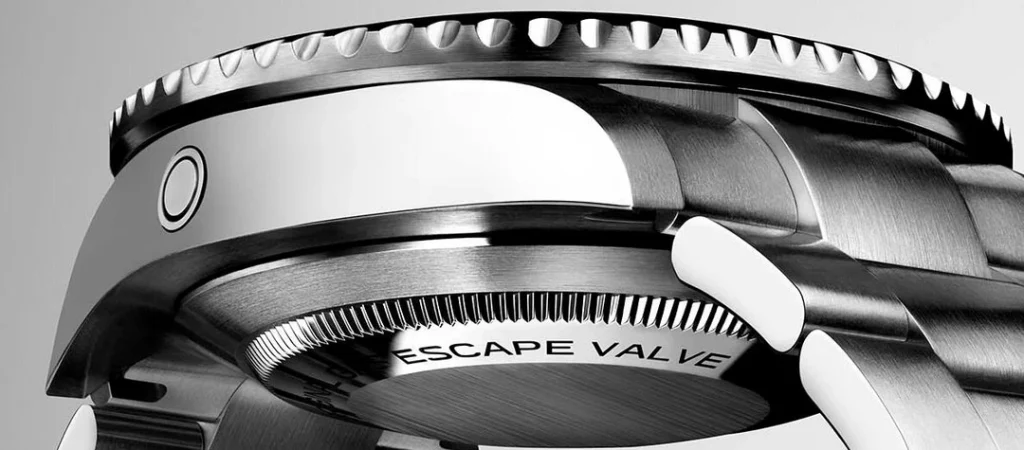
The configuration of the big guys is different.
Not all Rolexes have a smooth bottom.
The bottom back cover has a crown mark, which is also the difference between the Sea-Dweller and the Submariner. The entire series will be printed with the engraving to highlight the emperor’s throne: ORIGINAL GAS ESCAPE VALVE original rapid exhaust valve.
Three thousand thirty-five movement parameters: width 28.1MM, thickness 6.35, vibration frequency 28800, five-position observatory adjustment, 27 diamonds, double-layer alloy hairspring, non-card hairspring design, power reserve 50 hours.
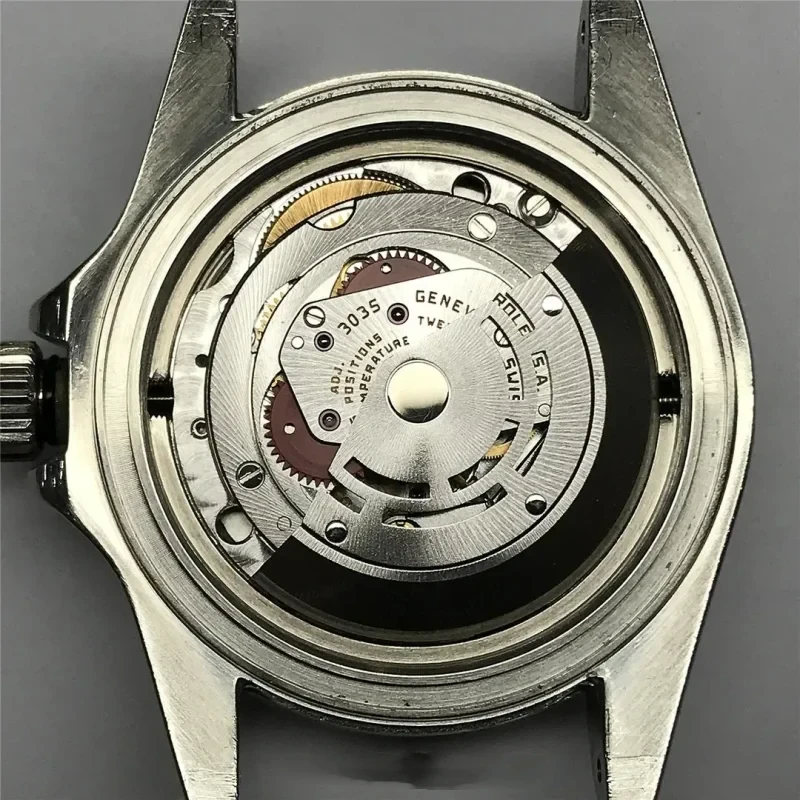
After 1988, the 16600 replaced the 16660 with the 3135 movement. In addition to the movement update and new 904L steel, the old Sea-Dweller’s King image ended from 1978 to 2008. The Sea-Dweller, which has been coquettish for 40 years, has a solid appearance and a higher waterproof level and leads deep-diving watches to truly enter the mass market and form a new trend flag benchmark.
I recommend that everyone experience this little ghost king. At that time, the old Sea-Dweller had historically innovative configurations: sapphire glass, unidirectional diving bezel, the first solid watch strap, the first second-generation helium exhaust device, the first diving depth of 1220 meters, 3035 movements, and a 40MM case diameter.


